Measurements with Fractions: Reading 8ths and 16th of an Inch
[OER Curriculum Guide Draft]
[May 11 2018]
Topic: Measurements with Fractions: Reading 8ths and 16th of an Inch
Lesson Objective: Students will be able to accurately measure and draw fractional lengths on rulers
Description: This lesson helps to build procedural skill with identifying unit fractions on a number line (and ruler). The partitioning of number lines and rulers is used here to introduce the idea that fractional lengths are invariant. This work develops students' understanding that a length does not change if its position on a number line or ruler changes.
Key Vocabulary:
- Align
- Length
- Number line
- Partition
- Ruler
- Unit
- Unit fraction
In machine shops, rulers are called scales. They come graduated in different fractions of an inch, or different “gradations.” So, reading a scale is reading fractions. Note that the fractions on scales used in metalworking are only a small set of all the fractions.
For metalworking, we don’t use 1/3’s or 1/5’s. We only use 1/2’s, 1/4’s, 1/8’s, 1/16’s, 1/32’s and 1/64’s.
A ruler (or scale) that has 8ths and 16ths on one side, and 32nds and 64ths of an inch on the other side is called a 4R scale.
Look at the 6 inch scale below. It is graduated in 1/8ths of an inch on the top side and 1/16ths of an inch on the bottom. What is the scale reading for the marker labeled “A”? You count the lines from the end.
The “A” is at the 3rd line so it is reading 3/8 of an inch.
Remember that every ruler fraction has to have an odd number on top or it is not in lowest terms. The “B” marker is at the 4th line so it is 4/8, which is the same as 1/2. The reading for “B” is 2 and 1/2 inches. Remember to include the whole number and not just the fraction in your answers!
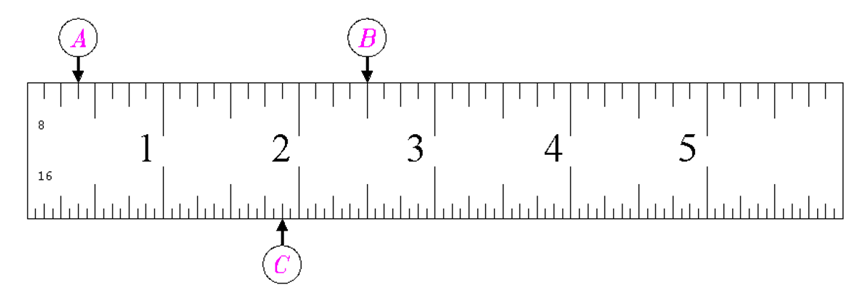
6-inch ruler
The bottom of the ruler is graduated in 1/16ths of an inch. Count the lines to take a reading but “count the lines odd”!
Marker C is 14 lines past 1, so that is 1 and 14/16 or 1 and 7/8 inches. Can you think of a way to read the ruler without having to count every little line?
Write down the readings for markers 1 through 10 on the answer spaces below. Give your answer as fractions reduced to their lowest terms.
Identifying Fractional Lengths On A Number Line-and-ruler
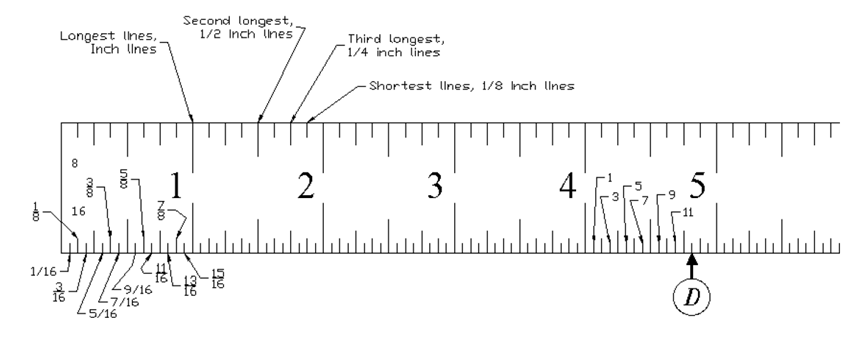
Ruler 2
Look at the line at marker “D”.
Decide which type of line it is touching, is it a 16th or 8th or what?
This is the smallest type of line so it is a 16th line. Now count from the nearest inch line but count only these 16th lines and count by odd numbers: 1, 3, 5, etc. What did you get? 13, so marker “D” reads 4 and 13/16 inches.
When you have trouble taking readings for scales graduated in 16ths, 32nds or 64ths, try counting the lines odd:
· Decide which type of line you have to read.
· Count ONLY those types of line and COUNT them ODD.
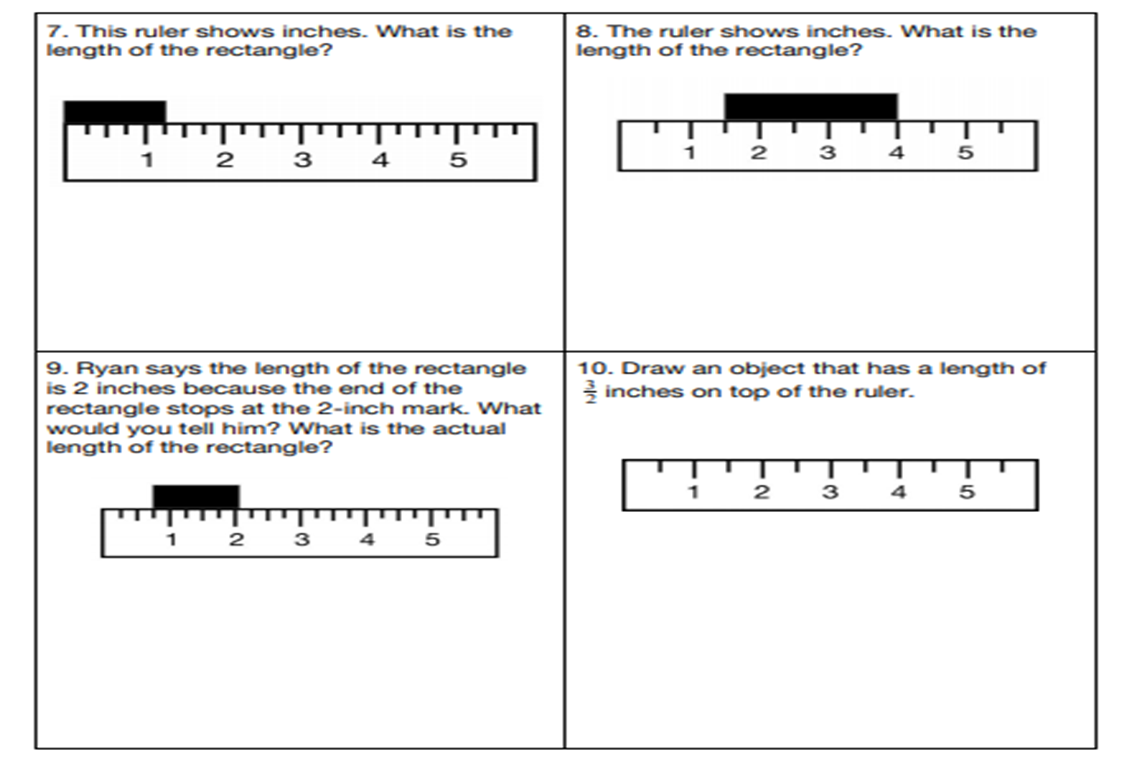
Assignment 1
Measure and Draw Fractional Lengths on Number lines and Rulers
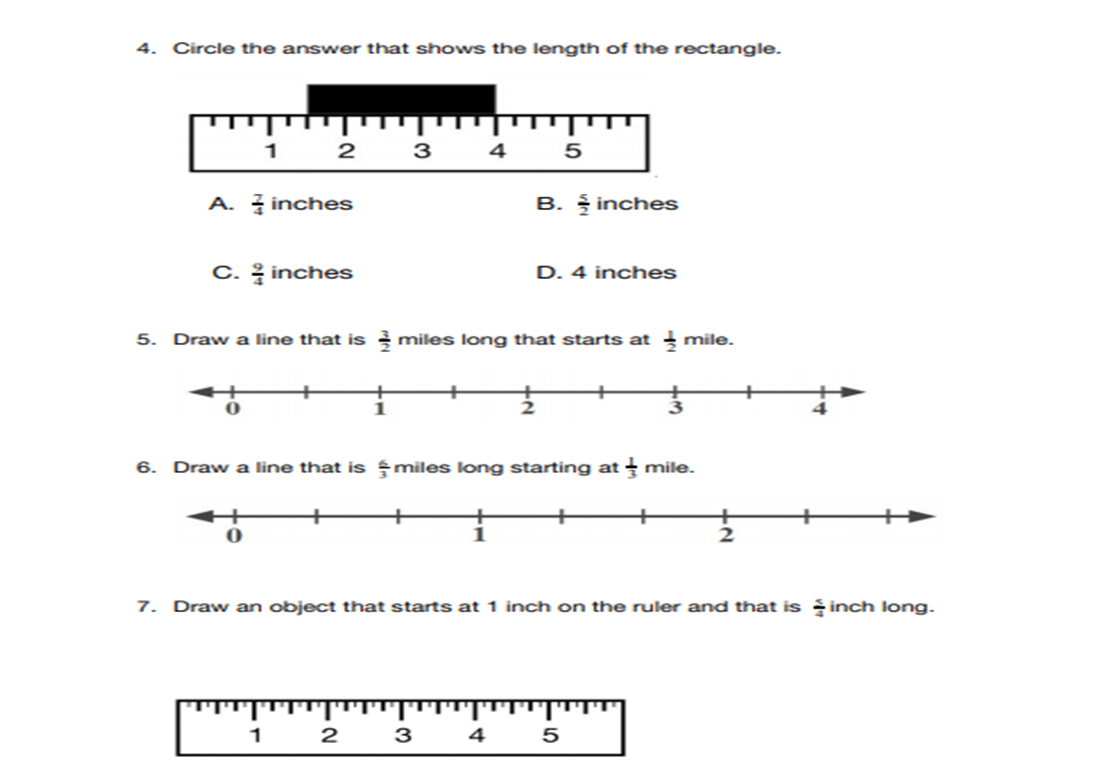
Assignment 2
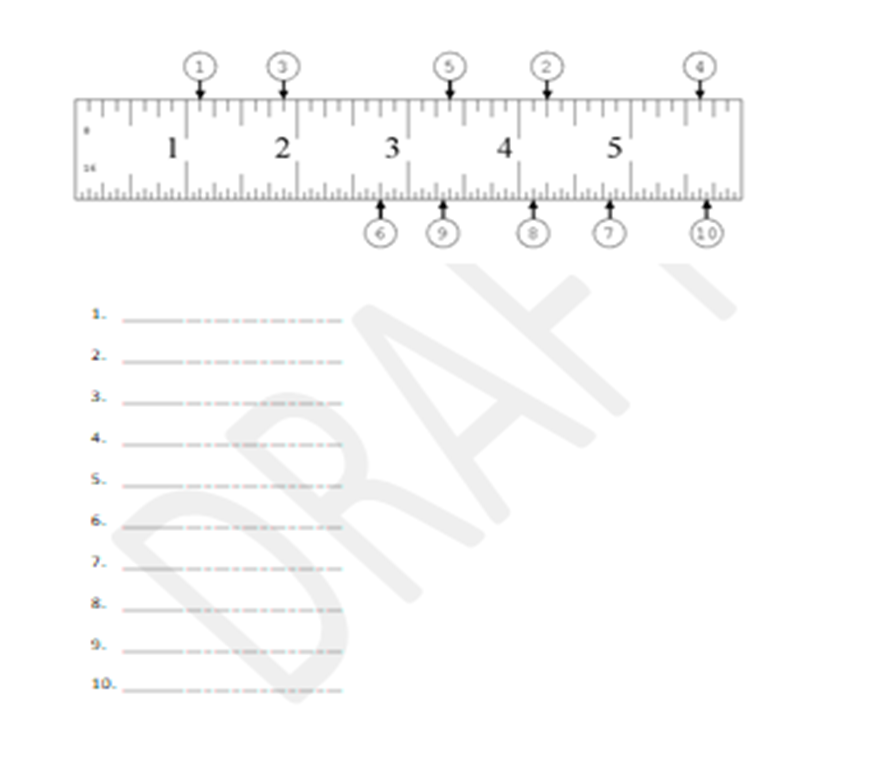
Assignment 3